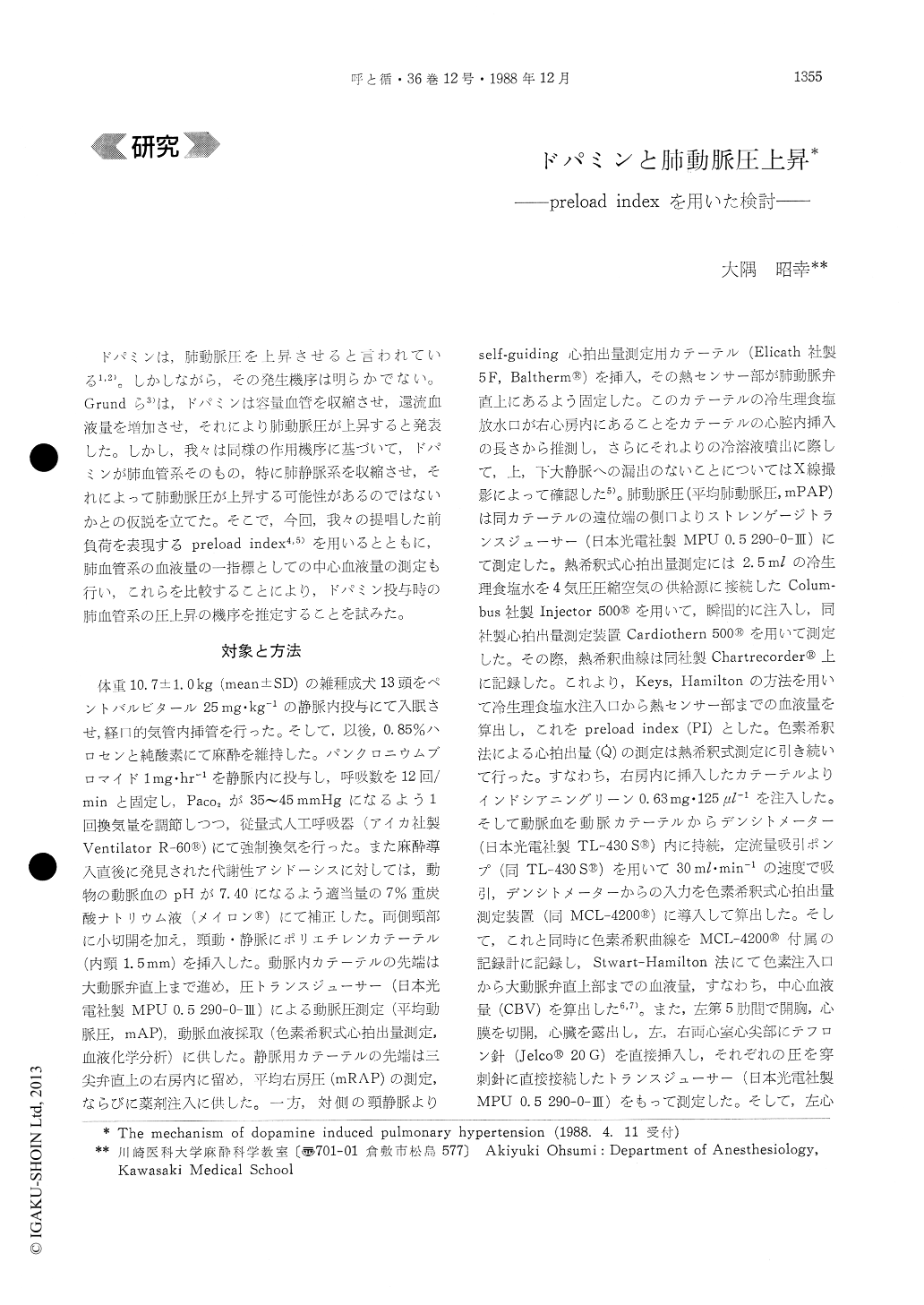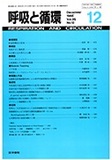Japanese
English
- 有料閲覧
- Abstract 文献概要
- 1ページ目 Look Inside
ドパミンは,肺動脈圧を上昇させると言われている1,2)。しかしながら,その発生機序は明らかでない。Grundら3)は,ドパミンは容量血管を収縮させ,還流血液量を増加させ,それにより肺動脈圧が上昇すると発表した。しかし,我々は同様の作用機序に基づいて,ドパミンが肺血管系そのもの,特に肺静脈系を収縮させ,それによって肺動脈圧が上昇する可能性があるのではないかとの仮説を立てた。そこで,今回,我々の提唱した前負荷を表現するpreload index4,5)を用いるとともに,肺血管系の血液量の一指標としての中心血液量の測定も行い,これらを比較することにより,ドパミン投与時の肺血管系の圧上昇の機序を推定することを試みた。
The mechanism of the increase in pulmonary artry pressure by dopamine was studied in 13 adult mon-grel dogs. Mean pulmonary artery pressure (mPAP), cardiac output (0), preload index (blood volume in the right atrium and right ventricle, PI), and central blood volume (CBV) significantly increased but pul-monary vascular resistance (PVR) showed no marked changes at various doses (5, 10, and 20 μg・kg-1・min-1) of dopamine. There was a very strong correlation between P1 and Q (r=0.95, p<0.01), but only a week correlation between PI and mPAP (r=0.47, p<0.01).No correlation was observed between mPAP and CBV or PVR.
Based on these results, the increase in mPAP after administration of dopamine is considered to be pro-duced by the increase in the venous return as indi-cated by the increase in PI, i. e. the increase in Q, and contraction of the pulmonary veins, possibly due to the direct action of dopamine per se.

Copyright © 1988, Igaku-Shoin Ltd. All rights reserved.


